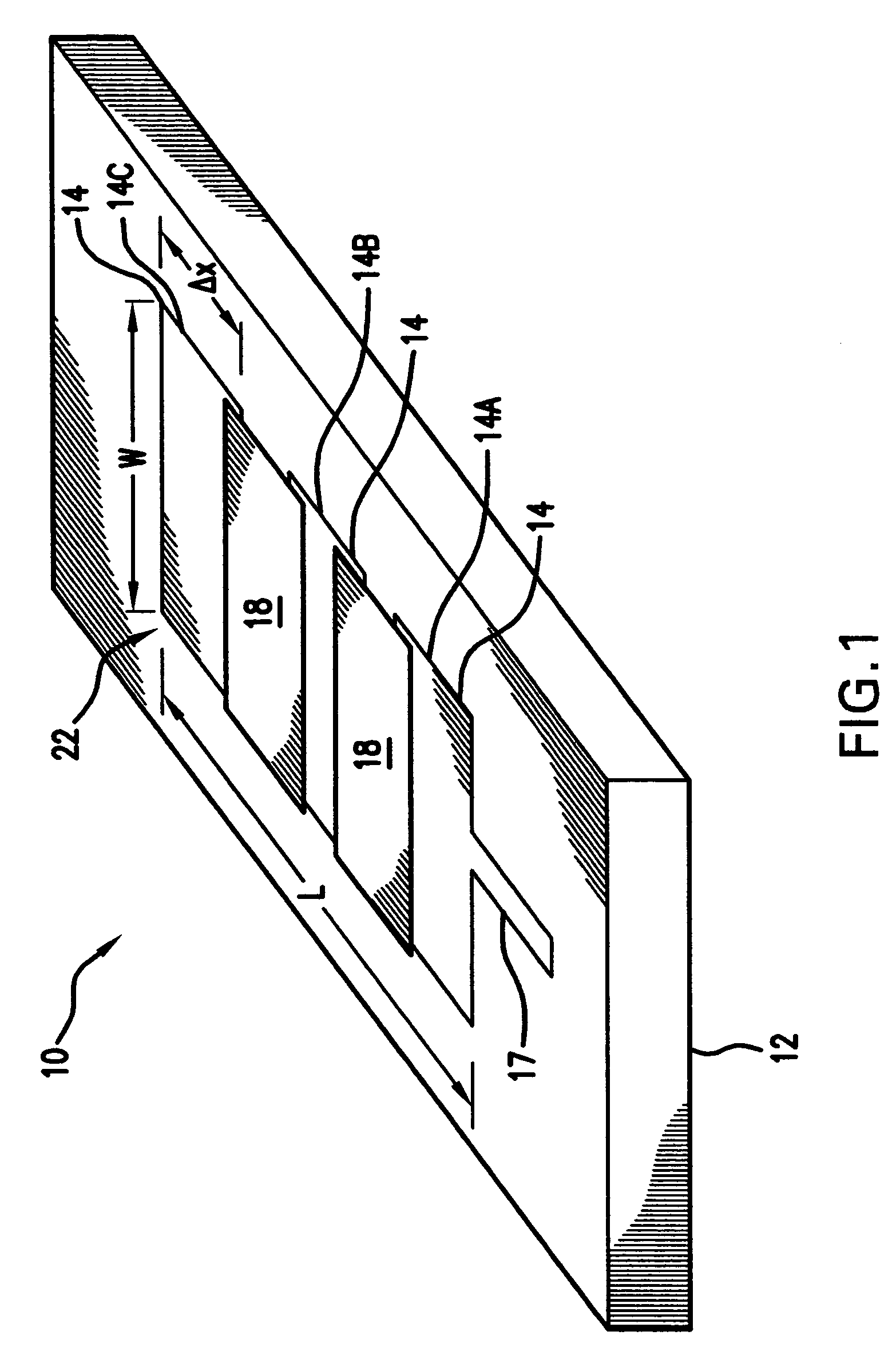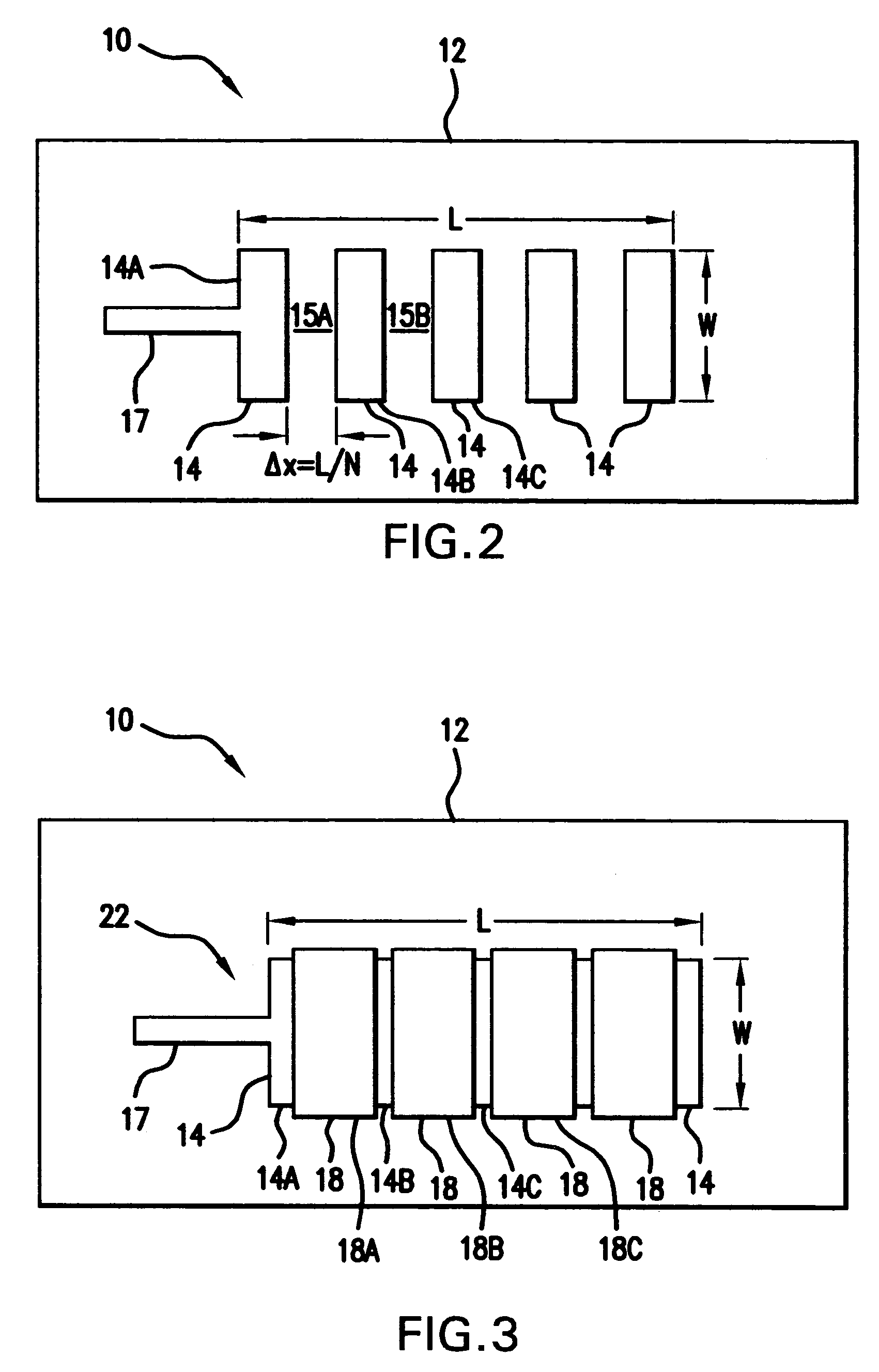Segmented microstrip patch antenna with exponential capacitive loading
a patch antenna and capacitive loading technology, applied in the field of patch antennas, can solve the problem that the microstrip patch antenna suffers from limited bandwidth, and achieve the effect of reducing the resonant effect of the antenna and increasing the bandwidth
- Summary
- Abstract
- Description
- Claims
- Application Information
AI Technical Summary
Benefits of technology
Problems solved by technology
Method used
Image
Examples
Embodiment Construction
[0020]Referring to FIGS. 1–3, there is shown microstrip patch antenna 10 of the present invention. Microstrip patch antenna 10 comprises substrate 12 of grounded dielectric material. The material from which substrate 12 is fabricated depends upon the frequency of operation. Suitable materials that can be used to fabricate substrate 12 include Teflon™, FR4 and Duroid. Preferably, substrate 12 is generally planar and is substantially rectangular shape. Microstrip patch antenna 10 further comprises N primary segments 14 of electrically conductive material that are disposed over substrate 12. In a preferred embodiment, each primary segment 14 is configured as single strip or piece of metal that has a substantially flat or planar top surface. In one embodiment, primary segments 14 are plated onto substrate 12 in accordance with techniques known in the art. Preferably, the metal selected for use in fabricating primary segments 14 has excellent electrical conductivity characteristics. Exam...
PUM
 Login to View More
Login to View More Abstract
Description
Claims
Application Information
 Login to View More
Login to View More - R&D
- Intellectual Property
- Life Sciences
- Materials
- Tech Scout
- Unparalleled Data Quality
- Higher Quality Content
- 60% Fewer Hallucinations
Browse by: Latest US Patents, China's latest patents, Technical Efficacy Thesaurus, Application Domain, Technology Topic, Popular Technical Reports.
© 2025 PatSnap. All rights reserved.Legal|Privacy policy|Modern Slavery Act Transparency Statement|Sitemap|About US| Contact US: help@patsnap.com



